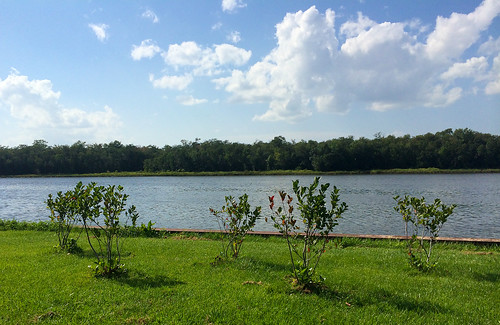Chesapeake and Atlantic Coastal Bays Trust Fund Supports 22 Projects at 77 Sites

Native tree planting figures prominently in many projects funded by the Trust Fund. Maryland DNR photo
Governor Larry Hogan and the Maryland Department of Natural Resources (DNR) today announced the award of $18.8 million to 22 ecological restoration projects that will improve water quality and habitat in the Chesapeake Bay watershed, while building local resilience to climate impacts. These awards encompass 77 unique sites that will be restored using best management practices, including riparian buffer and reforestation plantings, stream restoration, stormwater management, and wetland creation.
“Our administration’s commitment to environmental stewardship has included making record investments in Chesapeake Bay restoration, including fully funding the Chesapeake and Atlantic Coastal Bays Trust Fund,” said Governor Hogan. “Each of these projects plays a critical role in improving the quality of the bay, and making our ecosystem more resilient.”
Grants are made possible with funding through the Chesapeake and Atlantic Coastal Bays Trust Fund, which targets the most cost-efficient and effective non-point source pollution reduction projects. The projects awarded this funding round will benefit local waterways and the Chesapeake Bay by removing more than 41,083 pounds of nitrogen, 4,332 pounds of phosphorus, and 7,967 tons of suspended solids.
“We are grateful for the governor’s continued leadership in fully funding the Trust Fund, which is one of the most important water quality financing programs in the Chesapeake Bay watershed,” DNR Secretary Jeannie Haddaway-Riccio said. “This program allows us to identify the most meaningful and cost-effective projects in communities across Maryland to improve water quality and meet our Bay restoration goals.”
This year’s awards were selected from 51 proposals that were received. Proposals were prioritized based on cost-efficiency (state dollar per pound of nutrient and sediment reduced), project readiness, scientific rigor, geographic distribution, and overall quality.
The projects are listed on the DNR website along with other programs that are accessible through the department’s Grants Gateway application process. Through the improved connections across similar grant programs, the department seeks to support more comprehensive and integrated projects that achieve at least one of the following outcomes: fostering healthy ecosystems, building resiliency, or providing outdoor learning experiences.
